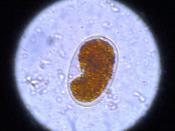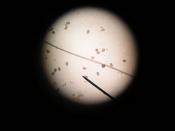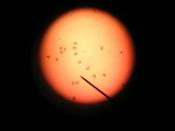Ancylostomiasis is also called Hookworm infection. Hookworms are intestinal parasites of human that can cause serious health problems for people of all ages and those who live in Southern Europe, Northern Africa, Northern Asia, and parts of South America. There are two kinds of Hookworms--Ancylostoma duodenale and Necator americanus--and Ancylostomiasis is estimated to have infected about one billion people, which is one sixth of the world's population. Before indoor bathrooms were installed in homes, hookworms were very common, especially in warm climates. These threadlike worms are still common today in poor areas where the bathroom may be an outhouse or simply the outdoors. Hookworms' parasitic region is the upper small intestine, especially the upper jejunum. Hookworms my also be to blame for the reputation many poor people in hot, moist climates have for being slow and lazy. In addition to being undernourished, these people have no energy because they are constantly infected with hookworms.
Transmission of hookworms is linked to lack of adequate sanitation and generally poor living conditions.
Hookworm's life cycle starts from the small intestine and ends there, too. Their eggs are released onto the soil through the human feces, where they grow into infective larvae, and when they are ready to enter the human's body, they extend their bodies in to the air. They remain there until they come into contact with the skin. Anyone who walks barefoot or plays (for children) on moist ground that is contaminated by human waste can pick up hookworm larvae on their feet. The worms burrow into the skin through hair follicles and sweat glands. Then they move into the venula and lymphatic blood vessels and are carried to the lungs. Form there the hookworms move into the throat. They are swallowed, and they settle in...


